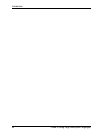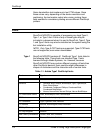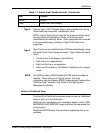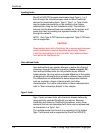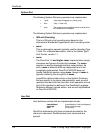
Guide to Using Page Description Languages 1-1
1. PostScript
This chapter provides an overview of standard PostScript
operations and guidelines for ensuring consistent printer output.
Implementation-dependent operations
The following operations are implementation-dependent.
Floating-point arithmetic and math operators
All PostScript floating-point arithmetic and math operators are
implementation-dependent if you use very large or very small
floating-point numbers. This is rarely a problem with PostScript
masters generated by “real world” creators; that is, commercial
PostScript creators such as Word or Excel. Handwritten test
masters, however, can cause problems.
Some handwritten test masters print out the limits of floating
point numbers and various floating-point operations. Because
these values may vary based on the PostScript implementation,
the test master output also varies, making these tests useless for
testing consistency across different PostScript printers.
Coordinate system default matrix
The PostScript current transformation matrix (CTM) controls the
mapping of user coordinates to device coordinates. You can
describe pages in your own coordinate system and let the
PostScript software transform your requests into the device
space. PostScript masters are device independent only when
they do not use the actual CTM values. When a master needs
CTM values, it becomes device-dependent. The occasional need
for CTM values causes inconsistent output across different
PostScript printers.










